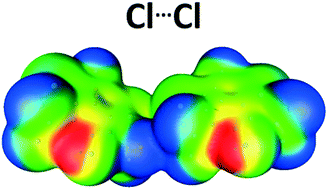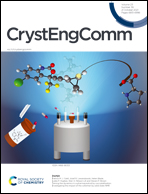Halogen bonds as a tool in the design of high energetic materials: evidence from crystal structures and quantum chemical calculations†
Abstract
Positive electrostatic potential over the central area of the molecular surface is one of the main characteristics of high energetic materials (HEMs) that determines their sensitivity towards detonation. The influence of halogen bonds on the values of the electrostatic potential of selected HEM molecules was studied in crystal structures extracted from the Cambridge Structural Database and by quantum chemical calculations. Analysis of halogen bonds in crystal structures containing halogen-substituted 2,4,6-trinitrophenyl fragments showed that these groups form halogen bonds (183 contacts). Analysis of electrostatic potential maps calculated for geometries of non-halogen bonded and halogen bonded HEM molecules extracted from crystal structures showed that halogen bonding modifies electrostatic potential in the centers of these compounds. Since in selected crystal structures other types of non-covalent interactions were also present, quantum chemical calculations on model systems were used to reveal and quantitatively describe the influence of halogen bonds on the electrostatic potential of selected HEM molecules. These results could be used for the design of new classes of halogen-containing high energetic molecules with reduced sensitivities towards detonation.

- This article is part of the themed collection: Supramolecular & Polymorphism


 Please wait while we load your content...
Please wait while we load your content...